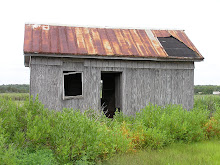Swim- Fish-Drink was the theme of the design on the t-shirt at a WATERKEEPER ALLIANCE conference a couple years ago. It's one of my favorite. Not just because it was a very trendy drab green color, but rather because these words ran across the chest, with an appropriate graphic of a swimmer, a fish and a glass of water above each word. Very simple, yet these 3 images and 3 words told a huge story about a single character - water.
Swim - Fish -Drink. That water theme sums up Worcester County in a nutshell. Tourists and residents alike flock to Worcester County to swim, jetski, water ski, wade in the county's water. Tourists and residents alike come here to boat, fish, clam, crab in the county's water. And we all drink the water here - well water or city water, it all comes from our aquifers that are fed from the groundwater, and that groundwater is recharged from whatever water can make its way through the soil.
'Stormwater' - plain and simple: any water that runs off a roof, a driveway, a patio, a lawn, a field. Stormwater carries any and all pollutants it picks up along its journey from rooftop, etc. to the nearest receiving body of water (your creek, your river, your bays.)And so I found myself on Wednesday, September 23, sitting in a meeting room for seven hours overlooking Back Creek in Annapolis, MD, a member of the Maryland Stormwater Consortium, with two dozen other environmental advocates, scientists, lawyers, engineers and land planning consultants to exchange ideas and formulate a communication strategy about the new Maryland Stormwater regulations that will go into effect early 2010.
The Maryland Stormwater Consortium formed almost two years ago, after the State Legislature passed the Maryland Stormwater Act of 2007 - probably one of the most progressive pieces of environmental legislation to ever come out of Annapolis because it mandated that county and municiple land use and development codes must incorporate ENVIRONMENTAL SITE DESIGN (ESD) into the earliest planning stages of development/redevelopment.
ESD says that after the construction phase is complete, all stormwater must be kept on the development site to the maximum extent practicable and what does run off must be very close to what ran off the natural site before it was developed. Redevelopment regulations now require improvements to how stormwater is controlled so that the new building and parking lots actually do a better job of keeping the water runoff on site than the old building did. (are your eyes glazing over yet?)
The Consortium positioned itself to advocate for the strongest regulations possible as the state's old regs began a transformation that would turn the building community upside down. The paradigm shifts!
Old skool: water is 'waste'- move it, pipe it, steer it by curb and gutter; whatever it takes to get it off the land as fast as possible. Dump it out into the closest body of water to the job site.
New skool: water is a 'resource' (wow, what a concept!) Capture it, infiltrate it, re-use it, keep it on the land, filter it and let it recharge the ground water.
So now 'old skool' county/city codes must change. Familiar, easy, 'been doing it this way for years' methods are out the window. Old dogs must learn new tricks. Fortunately there are a number of new dogs in town too, so in some cases the transition will not be so difficult.
The Coastkeeper, and other Maryland Riverkeepers have challenged Maryland on sediment erosion control laws. Now we are preparing a review and possible challenge to the weakest elements of the new stormwater regulations. Between the Waterkeepers and the Consortium, good citizens are working hard (and making our state/local agencies eat lots of antacids!) to enact the best possible regulations in order to protect THEIR water - YOUR water - OUR water!
We all want to Fish - Swim - Drink clean, healthy water. ESD will help keep pollutants and sediment to a minimum, if we can convince our elected officials to adopt strong local regulations.



Visiting your blog
ReplyDelete